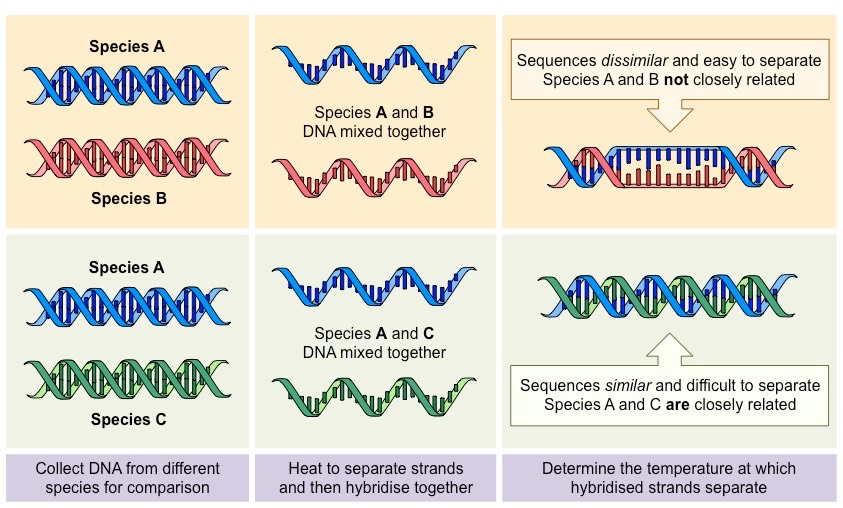Molecular evidence for phylogenetic relationships involves identifying conservation in DNA or amino acid sequences
One technique used to identify conservation in gene sequences is DNA – DNA hybridisation
- DNA is double stranded and is held together by hydrogen bonds between complementary base pairs
- DNA from different species can be separated into single strands with sufficient heat and then mixed together
- If two strands from different species share similar sequences they will hybridise (anneal together to form a double strand)
- The amount of heat then required to separate this hybrid molecule indicates how similar the two sequences are
- More heat indicates more hydrogen bonds formed, meaning more complementary base pairing due to similar sequences
- Less heat indicates fewer hydrogen bonds formed, meaning less base pairing has occurred because sequences are dissimilar
DNA-DNA Hybridisation

